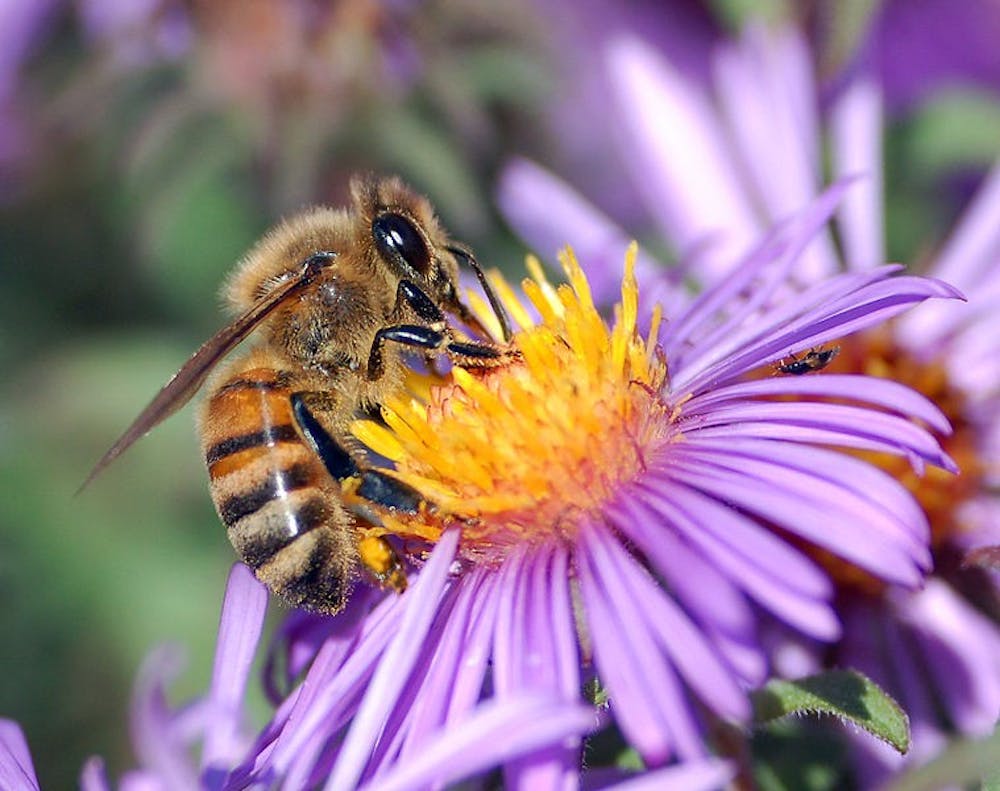One of the most contentious topics in the world today is the use of drones by the U.S. military to target terrorist threats. However, a different kind of drone may help promote agricultural and economic growth along with maintaining wildlife diversity.
Researchers at the National Institute of Advanced Industrial Science and Technology (AIST) in Japan are developing a drone that is capable of pollinating the flowers of various fruits and crops, including apples and cucumbers.
Pollination is critical to the reproduction of flowering plants by allowing the parent flower to make seeds that can be released. Flowers are capable of pollinating themselves by releasing pollen that they generate from their stamens, or male reproductive organs, into the pistils, or female reproductive organs.
However, self-pollination only creates genetically identical offspring. To stimulate genetic diversity and improved quality of plants, another mechanism is necessary. Typically this is the role that bees play as they are the major animal species that is capable of carrying pollen from one flower to the next, a process known as cross-pollination.
Unfortunately the bee population has been declining worldwide due to a variety of factors including increased pesticide use and global climate change. As a result, there are significantly fewer natural cross-pollinators that can improve the quality of fruits and crops.
This is where the researchers hope that their drones can potentially help resolve the problem. The drones may be able to serve as a supplement to bees as cross-pollinators.
“We hope this will help counter the problem of bee declines,” Eijiro Miyako, one of the lead researchers on the project at AIST, said. “But importantly, bees and drones should be used together.”
The prototype for the drone weighs about 15 grams and possesses horsehairs on the ventral, or bottom, side of the machine that resemble the hairy body of a bee. Covering the horsehairs is a sticky gel that pollen sticks to so that the drone can carry pollen from flower to flower.
The drone has been able to cross-pollinate Japanese lilies in the laboratory. In the lab the research team found that the drone was able to land on the flowers without damaging either the stamens or the pistils, which are vital to preserving the genetic alleles and traits of the parent plant in the gene pool. However, the drone is currently only able to be operated manually and has yet to be field-tested, raising concerns about its viability.
But the team hopes that in the future, the drone combined with artificial intelligence and cameras, will be able to pollinate flowers automatically.
“In the future, the pollen drones could definitely be viable, but I think that the drones are only a temporary solution to the problem,” junior Carolyn Duman said. “They don’t address the problem of the bees disappearing, which is a problem in biodiversity by itself.”
Ecologists bring into question whether or not the drones are a good economic investment for farmers.
“If you think about the almond industry for example, you have orchards that stretch for kilometers and each individual tree can support 50,000 flowers,” Saul Cunningham, ecologist at the Australian National University in Canberra, said. “So the scale on which you would have to operate your robotic pollinators is mind-boggling.”
However, bees are responsible for pollinating about $15 billion worth of crops in the U.S. alone. Without bees or an adequate substitute like the drones, the economic and biodiversity burden may be unbearable.





